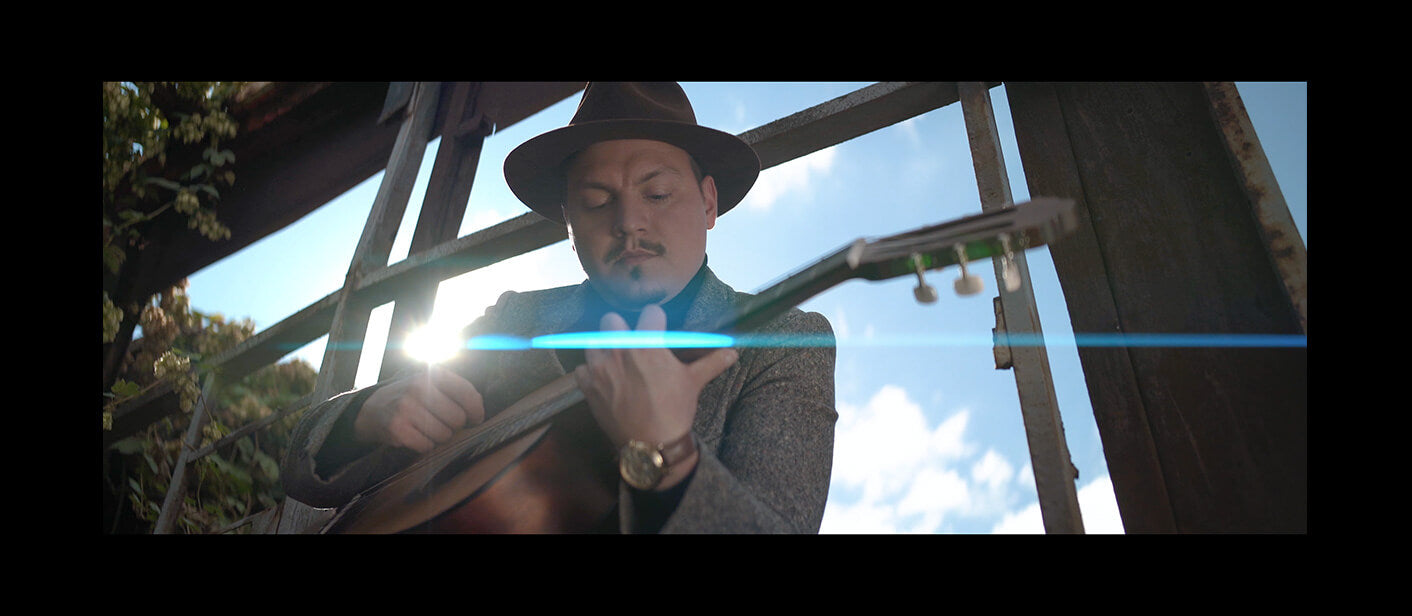Usar un objetivo anamórfico para fotografía fija se ha convertido en una excelente manera de crear una vista de imagen única que cambia y se desplaza con la perspectiva del espectador. La palabra “anamórfico” proviene de la palabra griega "transformar", lo que significa que las imágenes parecen normales desde una perspectiva, pero debido a la forma única del objetivo, son diferentes desde un nuevo ángulo.
Los objetivos anamórficos para fotografía son esenciales en el equipo de cualquier fotógrafo, añadiendo las tomas gran angular definitivas que cambian la perspectiva del público.

Beneficios del objetivo anamórfico para la fotografía
Compresión sin distorsión
Debido a que el uso del objetivo anamórfico para fotografía ofrece un gran angular, incluso las tomas en primer plano pueden presentar ese gran angular sin distorsionar el sujeto. Esto proporciona una forma única de compresión con una profundidad de campo reducida que es visualmente impresionante.

Bokeh ovalado
Bokeh es la calidad de los espacios desenfocados en una imagen, especialmente en lo que respecta a las luces desenfocadas. Las lentes esféricas presentan un bokeh circular. Sin embargo, al usar una lente anamórfica para fotografía, el bokeh es ovalado, lo que da una calidad distorsionada a los objetos desenfocados y aporta una mayor claridad al sujeto de la fotografía con lente anamórfica.

Efectos de llamarada
Debido a que la luz interactúa y se mueve dentro del objetivo al usar un objetivo anamórfico para fotografía, reflejando más luz dentro de la óptica, los objetivos anamórficos producen un efecto de destello distintivo. Esto puede incluir rayas de luz nítidas o resplandores suaves. Diferentes recubrimientos o filtros pueden realzar, controlar y manipular estos efectos.

Es importante señalar que esto puede incluir un destello horizontal de lente que es excelente para la fotografía de naturaleza y paisajes, incluyendo la luz solar, porque puede ejecutarse y aprovecharse dentro de la imagen al usar un lente anamórfico para fotografía fija.
Enfoque en rack
Los efectos de enfoque y estiramiento de una lente anamórfica para fotografía crean el enfoque por desplazamiento. Este cambio lúdico entre áreas enfocadas y desenfocadas puede generar un estiramiento vertical que desplaza el enfoque de un punto a otro. Las lentes anamórficas son ideales para este efecto debido a su forma ovalada.
Mejores prácticas para usar lentes anamórficos en fotografía
Adaptarse y seguir adelante
Empezar rápidamente con tu lente anamórfico para fotografía será mucho más fácil aprovechando los adaptadores. De esta manera, no tienes que cambiar el objetivo principal de tu cámara y puedes comenzar a disparar con un objetivo de cámara anamórfico de inmediato.
Enfoque y reenfoque
El enfoque automático no funcionará con un objetivo anamórfico para fotografía, por lo que necesitarás practicar el enfoque manual. Aprender a ajustar manualmente tu ISO, la distancia focal, la apertura y más te ayudará con esto.
Otro hecho importante al usar un objetivo anamórfico para fotografía es poder enfocar en tu sujeto en la cámara sin el objetivo puesto, luego colocar el objetivo y enfocar de nuevo. Eso creará un enfoque mejor que antes. El cambio de peso podría hacer que tu cámara se desplace, por lo que puede ser útil usar un monopié para mayor estabilidad.
Aprovechando el objetivo anamórfico para fotografía fija
La fotografía con lentes anamórficos ofrece una amplia gama de efectos y opciones con las que los fotógrafos pueden experimentar fácilmente para encontrar la distorsión de imagen ideal. Esta es una de las razones por las que el uso de un lente anamórfico para fotografía se ha convertido en un elemento básico de la industria.
SIRUI se enorgullece de ofrecer el objetivo anamórfico más impresionante y avanzado para fotografía. Para más ideas de fotografía y para ver nuestro objetivo anamórfico para fotografía, visita nuestro sitio web.

















